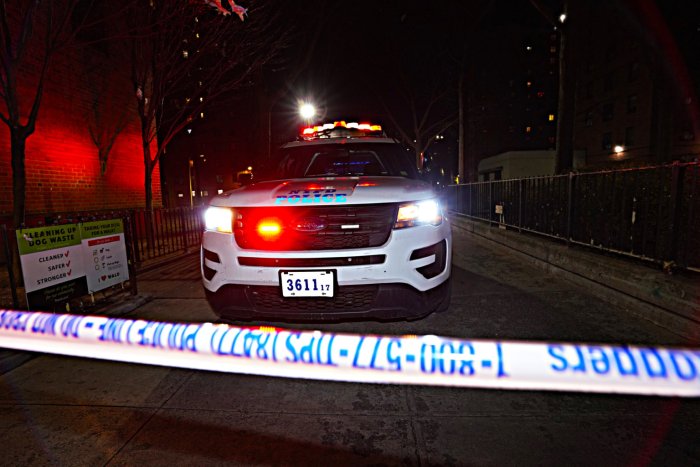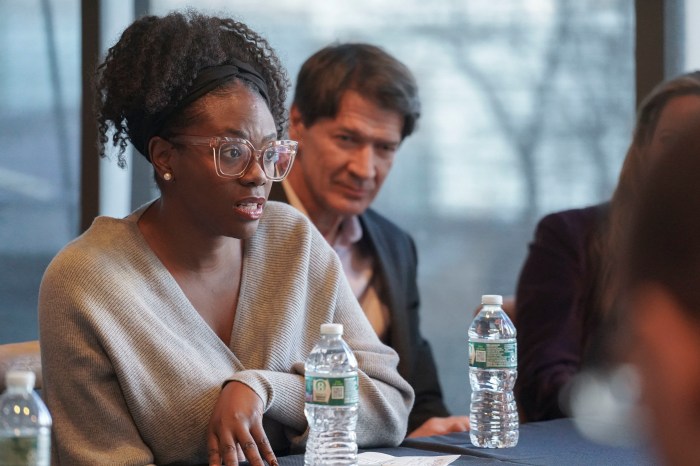Mayor Outlines Plan To Reinforce The City
Constructing a storm surge barrier on the Newtown Creek, wider dunes in the Rockaways and flood-proof systems in buildings in coastal areas of the city were among the ideas suggested in a master plan to make the city “stronger” and “more resilient,” as outlined by Mayor Michael Bloomberg on Tuesday, June 11.

During a press conference at the Brooklyn Navy Yard in Williamsburg, Bloomberg announced the release of a 400-page report titled “A Stronger, More Resilient New York,” generated through the Special Initiative for Rebuilding and Resiliency, which includes over 250 recommendations to strengthen the city’s infrastructure in preparation for future coastal storms and a predicted rise in sea levels in the next 30 years.
Acknowledging that the plan is as ambitious as it is expensive-with an estimated cost of $20 billion to fully implement all suggested measures- Bloomberg stated the proposed items outlined in the report are necessary due to the damages caused by Hurricane Sandy last October.
“Hurricane Sandy made it all too clear that, no matter how far we’ve come, we still face real, immediate threats. These concrete recommendations for how to confront the risks we face will build a stronger, more resilient New York,” Bloomberg said in his speech at the Brooklyn Navy Yard. “This plan is incredibly ambitious- and much of the work will extend far beyond the next 200 days-but we refused to pass the responsibility for creating a plan onto the next administration. This is urgent work, and it must begin now.”
The suggested infrastructure improvements were created based on the data gathered by the New York City Panel on Climate Change. It was originally convened by Mayor Bloomberg in 2008 as part of the creation of the PlaNYC master plan to improve the city over the next 30 years, but was reconvened by the mayor following Hurricane Sandy.
Hurricane Sandy made landfall near Atlantic City, N.J., on the night of Oct. 29, 2012, but the superstorm nonetheless sent a heavy storm surge crashing into the shoreline of New York City, wiping out communities in the Rockaways, Brooklyn and Staten Island. Other coastal areas were heavily flooded, including sections of Brooklyn and Queens which were previously not thought to be in danger of flooding.
Severe weather events such as Hurricane Sandy are more likely to occur in the decades to come as a result of climate change, researchers indicated. New York City may experience up to three days every year of more than two inches of rain by the 2050s; presently, the city averages about two days of such heavy rain annually.
Heat waves-in which high temperatures reach 90 degrees or higher on three or more consecutive days- are also likely to become a more frequent occurrence in the years ahead. The report found that such elongated periods of hot weather will put further strain on the city’s electrical grid.
The predicted climate change could also lead to a 2.5-foot rise in sea levels by the 2050s, it was noted. Without infrastructure improvements, more coastal areas of the city could wind up being swallowed up by water.
Among the recommendations listed in “A Stronger, More Resilient New York” include the creation of a network of storm surge barriers and levees along waterways around the five boroughs. One such fortification would be constructed near the mouth of the Newtown Creek between Long Island City and Greenpoint.
The device-similar to the locks of a canal-would be open during periods of calm weather to allow for barges and boats to pass through. During severe weather events in which a storm surge is anticipated, the barrier would close in order to prevent flooding in both Long Island City and Greenpoint, as well as industrial parts of Maspeth and East Williamsburg.
Similar surge barriers were also recommended in the report for installation at the mouth of Jamaica Bay in order to protect the communities of Howard Beach, Hamilton Beach and Broad Channel in Queens, and Canarsie, Gerritsen Beach and Mill Basin in Brooklyn.
The city also called for the creation of larger dunes on the Rockaway Peninsula between Beach Ninth and Beach 149th Streets, as well as a “double dune” system in Breezy Point, the western-most tip of the peninsula. Additionally, the city proposed widening Rockaway beaches by adding 3.6 million cubic yards of sand.
All of these projects would be launched in conjunction and consultation with the U.S. Army Corps of Engineers.
Other recommendations in the report include the following:
– providing loans and grants to businesses to flood-proof buildings located in coastal areas of the city;
– updating existing zoning and construction codes in order to meet revised flood zone standards;
– working with the federal government to reform the flood insurance program, including initiatives to reduce premiums and institute flexible pricing options;
– requiring all utility companies to analyze their networks and make necessary improvements to fortify them from weather risks; and
– develop a fuel security strategy to prevent gasoline shortages similar to that experienced following Hurricane Sandy.
The full report can be viewed online at www.nyc.gov.


































